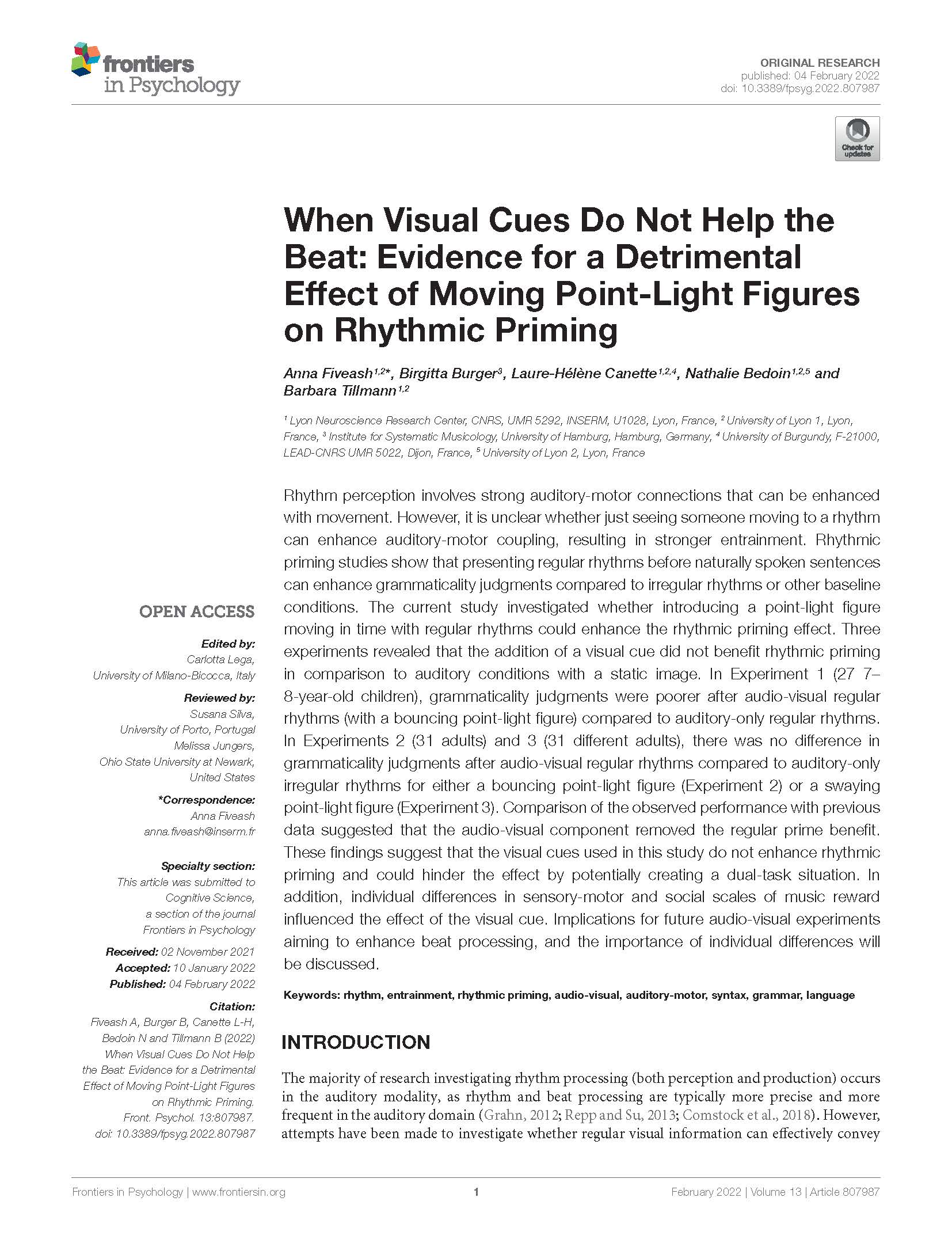Rhythm perception involves strong auditory-motor connections that can be enhanced with movement. However, it is unclear whether just seeing someone moving to a rhythm can enhance auditory-motor coupling, resulting in stronger entrainment. Rhythmic priming studies show that presenting regular rhythms before naturally spoken sentences can enhance grammaticality judgments compared to irregular rhythms or other baseline conditions. The current study investigated whether introducing a point-light figure moving in time with regular rhythms could enhance the rhythmic priming effect. Three experiments revealed that the addition of a visual cue did not benefit rhythmic priming in comparison to auditory conditions with a static image. In Experiment 1 (27 7–8-year-old children), grammaticality judgments were poorer after audio-visual regular rhythms (with a bouncing point-light figure) compared to auditory-only regular rhythms. In Experiments 2 (31 adults) and 3 (31 different adults), there was no difference in grammaticality judgments after audio-visual regular rhythms compared to auditory-only irregular rhythms for either a bouncing point-light figure (Experiment 2) or a swaying point-light figure (Experiment 3). Comparison of the observed performance with previous data suggested that the audio-visual component removed the regular prime benefit. These findings suggest that the visual cues used in this study do not enhance rhythmic priming and could hinder the effect by potentially creating a dual-task situation. In addition, individual differences in sensory-motor and social scales of music reward influenced the effect of the visual cue. Implications for future audio-visual experiments aiming to enhance beat processing, and the importance of individual differences will be discussed.
When visual cues do not help the beat: Evidence for a detrimental effect of moving point-light figures on rhythmic priming
